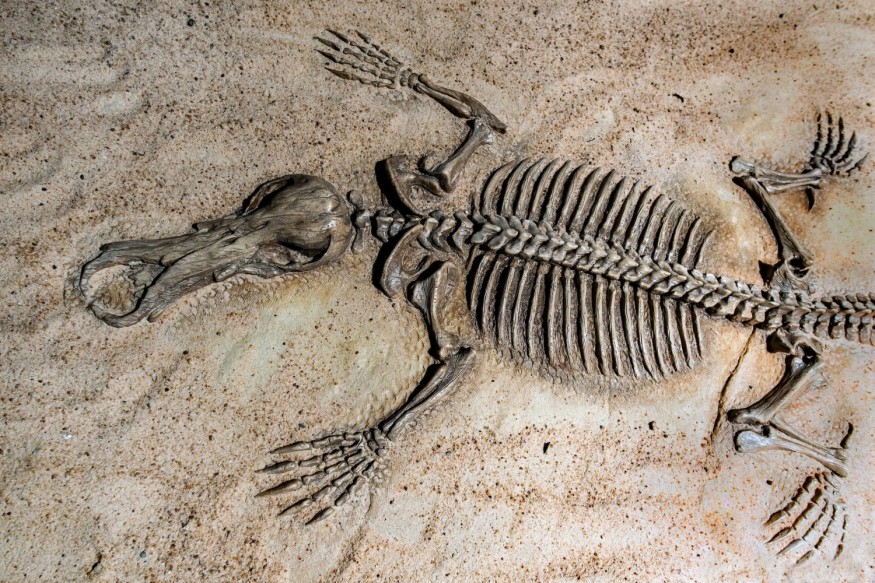
Kenya, often referred to as the "cradle of humankind," is a land of breathtaking natural beauty and rich cultural diversity. But beyond its stunning landscapes, phenomenal wildlife safari experience and vibrant communities, Kenya holds a unique place in the annals of human history. It is a country teeming with evidence of our ancient past, a veritable treasure trove for anthropologists and paleontologists seeking to unravel the mysteries of human evolution.
In this condensed blog post, we embark on a journey through Kenya's anthropological safari, exploring fossils found in Kenya, the reasons why Kenya is considered the cradle of humankind, the evidence supporting Africa as the cradle of humankind, and the fascinating evolution of man in this remarkable country.
Fossils Found in Kenya
Kenya's significance in the study of human evolution cannot be overstated, largely due to the incredible wealth of fossils discovered within its borders. These fossilized remains have provided crucial insights into our evolutionary history, and many of them have been instrumental in reshaping our understanding of human origins.
One of the most famous fossil discoveries in Kenya is that of "Turkana Boy," scientifically known as Homo erectus. Turkana Boy, a nearly complete skeleton of a young hominin who lived around 1.5 million years ago, was unearthed near Lake Turkana in northern Kenya.
This remarkable find shed light on the physical characteristics and lifestyle of our ancestors, suggesting that Homo erectus had a body adapted for long-distance running and was potentially the first hominin species to venture out of Africa.
Another iconic discovery is the skull of "KNM-ER 1470" from Koobi Fora, also near Lake Turkana. This fossil challenged existing ideas about the human family tree, as its unique characteristics indicated the presence of multiple hominin species in Africa at the same time, pushing back the timeline of our ancestors' existence.
Furthermore, Kenya has yielded a wealth of fossils belonging to early hominins like Australopithecus afarensis, dating back around 3.5 million years. The famous Laetoli footprints, which preserve the tracks of these ancient hominins, were found in neighboring Tanzania but provide additional evidence of our ancestors' presence in East Africa.
These discoveries are just the tip of the iceberg. Kenya's fossil record continues to grow, offering an ever-expanding glimpse into the complex tapestry of human evolution.
10 Reasons Why Kenya is the Cradle of Humankind
Rich Fossil Record: Kenya boasts a remarkable fossil record spanning millions of years, making it a prime location for the study of human evolution.
Geological History: Kenya's geological history is intertwined with the development of the Great Rift Valley, a geological wonder that has exposed numerous fossils through tectonic activity. On a Kenya safari, visitors get to easily witness this awe inspiring gorge at various spots through the country. The most popular safari destinations in Kenya include Masai Mara National Reserve, Nairobi National Park, Diani Beach, Mombasa Beach, and Lake Nakuru National Park.
Early Hominins: The discovery of early hominin fossils like Australopithecus afarensis and Homo erectus in Kenya provides crucial insights into the evolution of our species.
Turkana Basin: Traveling on a robust all-terrain vehicle such as Toyota Harrier, Toyota Prado and others to the farthest parts of northern Kenya takes you to the Turkana Basin, often referred to as the "Cradle of Mankind." It is one of the world's most prolific sites for paleontological research.
Ancient Lakes: The presence of ancient lakes in Kenya, such as Lake Turkana and Lake Baringo, has created ideal conditions for fossil preservation.
Diverse Ecosystems: Kenya's varied ecosystems, from savannas to rainforests, offer clues about the changing environments early humans adapted to.
Stone Tools: Evidence of early stone tools used by our ancestors has been found in Kenya, indicating the development of cognitive and technological skills.
Cultural Heritage: Kenya's rich cultural heritage includes indigenous tribes and their traditions, some of which have persisted for thousands of years.
World Heritage Sites: Kenya is home to several UNESCO World Heritage Sites, including Koobi Fora, known for its significant fossil finds.
Collaborative Research: Kenya has actively supported international collaborations in paleontological research, fostering a global community of scientists dedicated to unraveling the story of human evolution.

Evidence That Africa is the Cradle of Humankind
While Kenya is often singled out as a cradle of humankind, it's crucial to recognize that this designation extends to the entire African continent. The evidence supporting Africa as the cradle of humankind is overwhelming and comes from various sources, including fossils, genetic studies, and archaeological findings.
Fossil Record: Africa holds a vast and diverse fossil record of early hominins, spanning from around 7 million years ago to the emergence of anatomically modern humans. This extensive fossil evidence highlights the continent's pivotal role in human evolutionary history.
Genetic Diversity: Genetic studies have consistently shown that the greatest genetic diversity among modern human populations is found in Africa. This suggests that humans originated in Africa and subsequently dispersed to other parts of the world.
Oldest Stone Tools: The oldest known stone tools, dating back over 2.5 million years, were discovered in Africa. These tools, found in places like Gona in Ethiopia, provide further evidence of early human technological advancements on the continent.
Cultural Complexity: African archaeological sites, such as those in the Blombos Cave in South Africa, have yielded evidence of symbolic and artistic expression, indicating the presence of complex cultures in ancient Africa.
Geological Context: The geological history of Africa, including the formation of the Great Rift Valley, has exposed numerous fossils and provided ideal conditions for their preservation.
© 2025 ScienceTimes.com All rights reserved. Do not reproduce without permission. The window to the world of Science Times.












